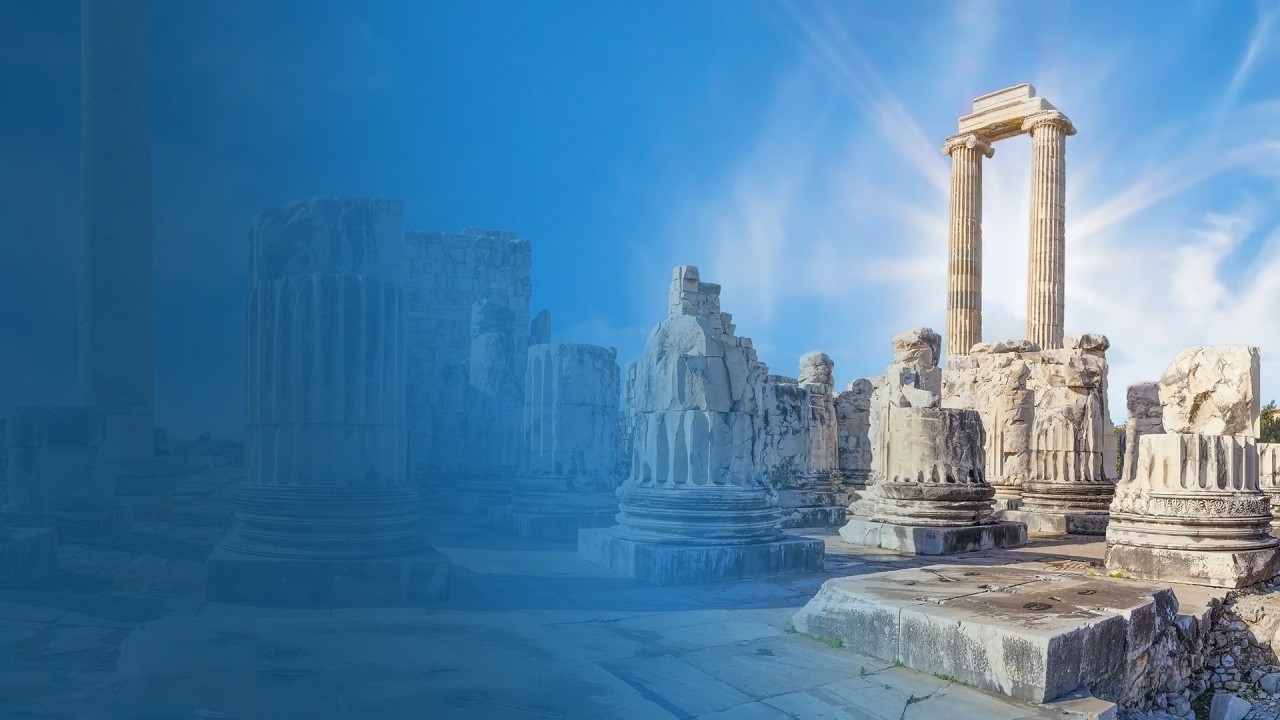Didim History
The first settlement traces of Didim district date back to the Neolithic Period (8000 BC). B.C. In the 16th century, the presence of Mycenae, Cretans, and later Aka colonies can be seen. Didim (Didyma), which is located within the borders of the "Karia" region, was passed into the hands of the Turks after the Lycians, Persians, Seleucids, Attalids, Romans and Byzantines as the "sacred area" of Miletus. 1. It re-joined the Byzantine borders with the Crusades. Caria Region came under the rule of Menteşe Principality in 1280, Aydınoğlu Principality in 1300 and Ottoman Empire in 1413. With the temple destroyed in the great earthquake in the 14th century, Didim settlement continued its existence as a small Greek village until the Republic for many years. This village, called Yoran / Yeronda, also had a Turkish settlement in the north east, called "Islam Yoran". After the War of Independence, the settlement was evacuated in the region in 1922. In 1924, within the scope of the exchange, exchanges from Balkan countries, especially Greece, were settled in this region.
It continued its existence under the name of “Yeronda - Yoran” during the Ottoman Empire. After the earthquake disaster in the region in 1955, the settlement around the Temple of Apollo, which was called "Hisar", was moved one kilometer to the south with the name of "Yenihisar" with the Disaster Houses distributed in 1961.
Municipal organization was established in 1968 in Yenihisar, which maintained its identity as a village until 1967. The town, which started to develop rapidly with the tourism movement that started in the 1980s, became a district in 1991 under the name Yenihisar. In 1997, it was renewed as "Didim", which is located only in one place in the world and originated from "Didymaion" in order not to incline the name similarity.
Didim has witnessed civilizations that left a mark in history due to its location and is a geopolitically important place. Although the Western world says that civilizations originate from Greece, Anatolian lands continued to create unique civilizations by melting all civilizations coming from outside in their own culture pot.
At the entrance of Didim, the Temple of Apollo, which is considered as the most impressive independent monument of the Western Anatolian coast, rises. The temple's monumental dimensions and unique plan, as well as its preservation in a very good condition, are astonishing. There is no temple in the Greek world that will leave the Temple of Apollo behind with a significant difference in size. The Temple of Apollo, designed during the Hellenistic period, shows that giant-sized architectural works were not under the monopoly of the Roman people. Didyma has never been a city. The temple and the consciousness under his rule are within the territory of Miletus, and his priest was among the city's leading officials.
The name Didyma does not originate from Greek, but from Anatolian languages. The fact that it resembles the word didymi, which means “twins” as a coincidence, arouses the belief that it is related to Apollo and her twin sister Artemis. The Temple of Apollo is a Consciousness Center.
It is known that visitors coming from Miletus and the surrounding cities land on Panormos Port (near Mavisehir) and reach the temple by a sacred road. Sculptures are lined on both sides of the "Sacred Way". B.C. Many of these sculptures, dating back to the 6th century, remained in their original places until they were sent to the British Museum by Newton in 1858. Describe upright sitting figures, most of them from the Archaic period.
According to a Roman legend, the head relief of Medusa, one of the Gorgon sisters, who turned the person he looked at with his eyes into stones, is considered very valuable in terms of artistic and historical aspects, and is now accepted as the symbol of the Temple of Didim and Apollo.
At the end of the "Sacred Way" between the Temple of Miletus and Apollo, there is the "Sanctuary of Artemis". This sacred road is between the temple and the port of Panormas, where today's Mavisehir is located. Those who come for prayer and team requests land ashore in Port of Panormos and 4km. the marble, surrounded by lion and Branhid sculptures, reached the Temple on foot.
As in Claros, “Orakl” was given by female priests or “Orakl” nuns as “Hexametrik”, that is, with six poems. Visitors had to pass the sacred way to reach "Orakl" first.
Visitors to Didima performed rites, formed regiments under the management of the priests, and made walks with torches at night. During the blessing times, the Miletians came to the port of Panormas, then the port, walking the four-kilometer stone path (the last two kilometers were decorated with sculptures), singing (Paion: Sacred songs) and reaching the Temple. This walk would take four days.



